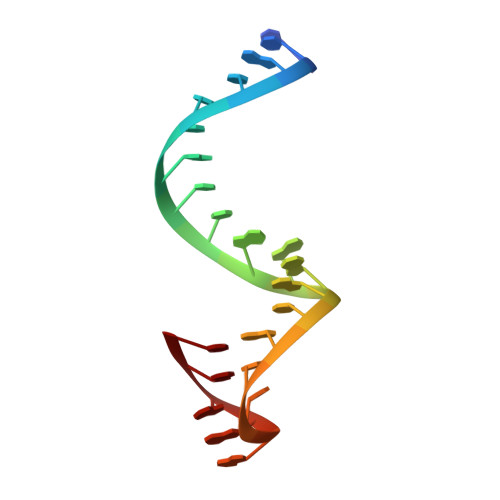Structural interpretation of the effects of threo-nucleotides on nonenzymatic template-directed polymerization.
Zhang, W., Kim, S.C., Tam, C.P., Lelyveld, V.S., Bala, S., Chaput, J.C., Szostak, J.W.(2021) Nucleic Acids Res 49: 646-656
- PubMed: 33347562
- DOI: https://doi.org/10.1093/nar/gkaa1215
- Primary Citation of Related Structures:
6U7Y, 6U7Z, 6U89, 6U8F, 6U8U - PubMed Abstract:
The prebiotic synthesis of ribonucleotides is likely to have been accompanied by the synthesis of noncanonical nucleotides including the threo-nucleotide building blocks of TNA. Here, we examine the ability of activated threo-nucleotides to participate in nonenzymatic template-directed polymerization. We find that primer extension by multiple sequential threo-nucleotide monomers is strongly disfavored relative to ribo-nucleotides. Kinetic, NMR and crystallographic studies suggest that this is due in part to the slow formation of the imidazolium-bridged TNA dinucleotide intermediate in primer extension, and in part because of the greater distance between the attacking RNA primer 3'-hydroxyl and the phosphate of the incoming threo-nucleotide intermediate. Even a single activated threo-nucleotide in the presence of an activated downstream RNA oligonucleotide is added to the primer 10-fold more slowly than an activated ribonucleotide. In contrast, a single activated threo-nucleotide at the end of an RNA primer or in an RNA template results in only a modest decrease in the rate of primer extension, consistent with the minor and local structural distortions revealed by crystal structures. Our results are consistent with a model in which heterogeneous primordial oligonucleotides would, through cycles of replication, have given rise to increasingly homogeneous RNA strands.
Organizational Affiliation:
Howard Hughes Medical Institute and Center for Computational and Integrative Biology, Massachusetts General Hospital, Boston, MA 02114, USA.
















